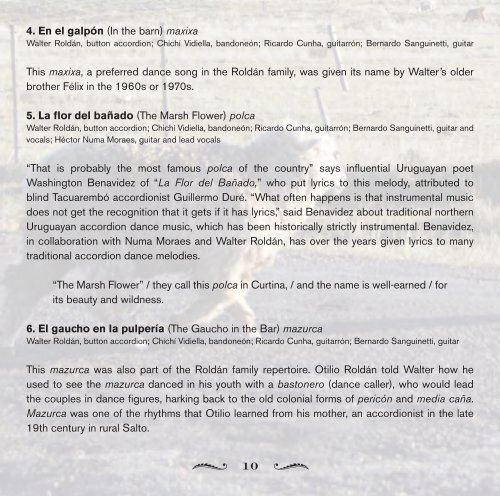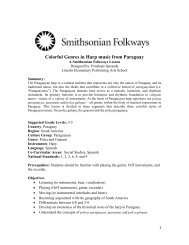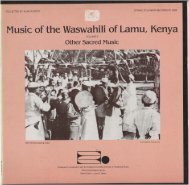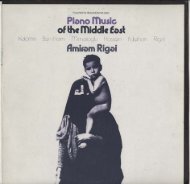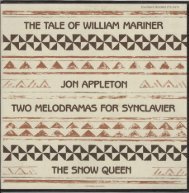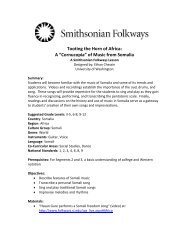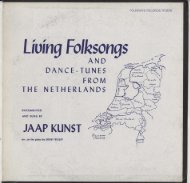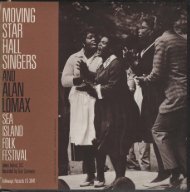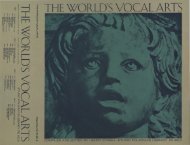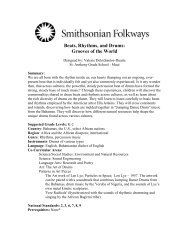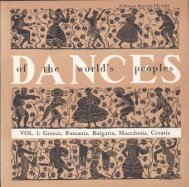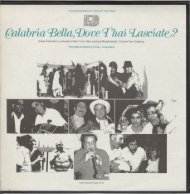4s 4s
4s 4s
4s 4s
Create successful ePaper yourself
Turn your PDF publications into a flip-book with our unique Google optimized e-Paper software.
4. En el galpón (In the barn) maxixa<br />
Walter Roldán, button accordion; Chichí Vidiella, bandoneón; Ricardo Cunha, guitarrón; Bernardo Sanguinetti, guitar<br />
This maxixa, a preferred dance song in the Roldán family, was given its name by Walter’s older<br />
brother Félix in the 1960s or 1970s.<br />
5. La flor del bañado (The Marsh Flower) polca<br />
Walter Roldán, button accordion; Chichí Vidiella, bandoneón; Ricardo Cunha, guitarrón; Bernardo Sanguinetti, guitar and<br />
vocals; Héctor Numa Moraes, guitar and lead vocals<br />
“That is probably the most famous polca of the country” says influential Uruguayan poet<br />
Washington Benavidez of “La Flor del Bañado,” who put lyrics to this melody, attributed to<br />
blind Tacuarembó accordionist Guillermo Duré. “What often happens is that instrumental music<br />
does not get the recognition that it gets if it has lyrics,” said Benavidez about traditional northern<br />
Uruguayan accordion dance music, which has been historically strictly instrumental. Benavidez,<br />
in collaboration with Numa Moraes and Walter Roldán, has over the years given lyrics to many<br />
traditional accordion dance melodies.<br />
“The Marsh Flower” / they call this polca in Curtina, / and the name is well-earned / for<br />
its beauty and wildness.<br />
6. El gaucho en la pulpería (The Gaucho in the Bar) mazurca<br />
Walter Roldán, button accordion; Chichí Vidiella, bandoneón; Ricardo Cunha, guitarrón; Bernardo Sanguinetti, guitar<br />
This mazurca was also part of the Roldán family repertoire. Otilio Roldán told Walter how he<br />
used to see the mazurca danced in his youth with a bastonero (dance caller), who would lead<br />
the couples in dance figures, harking back to the old colonial forms of pericón and media caña.<br />
Mazurca was one of the rhythms that Otilio learned from his mother, an accordionist in the late<br />
19th century in rural Salto.<br />
4 10 s


